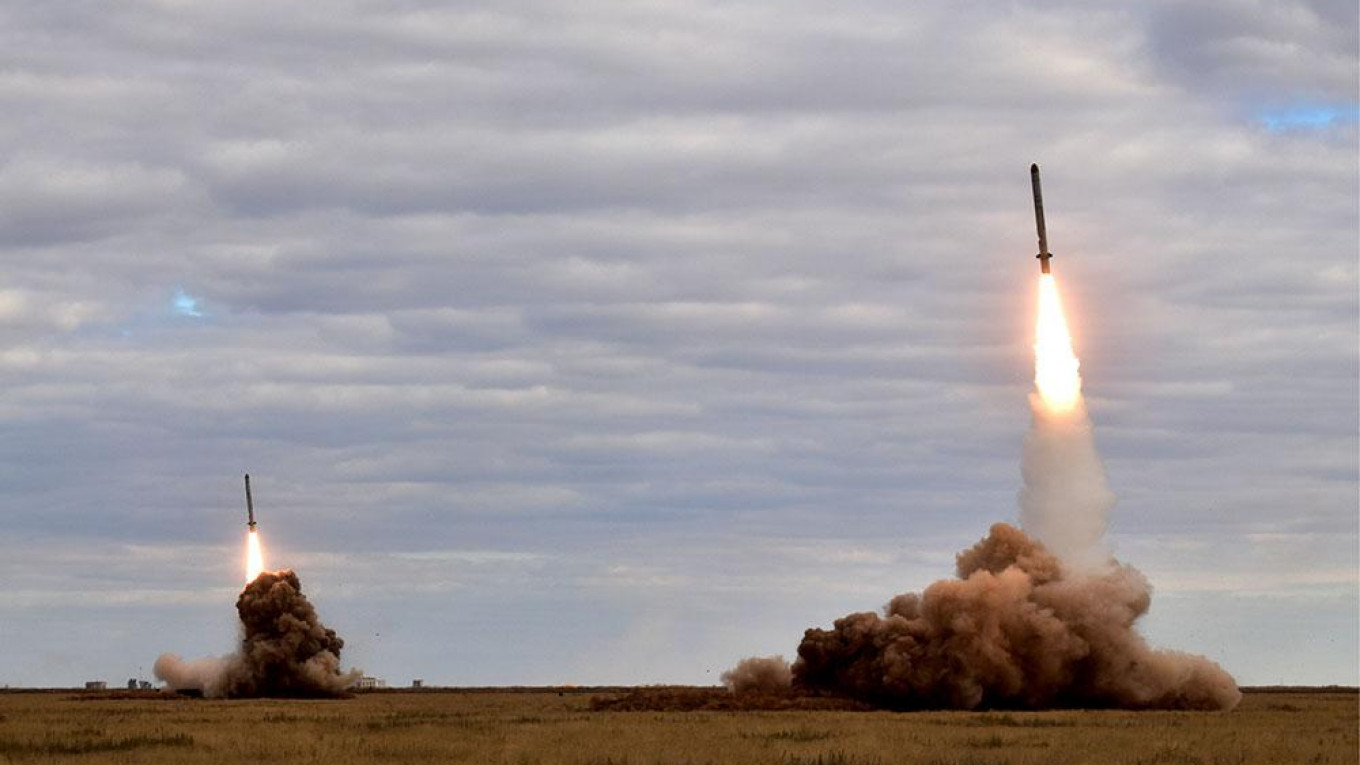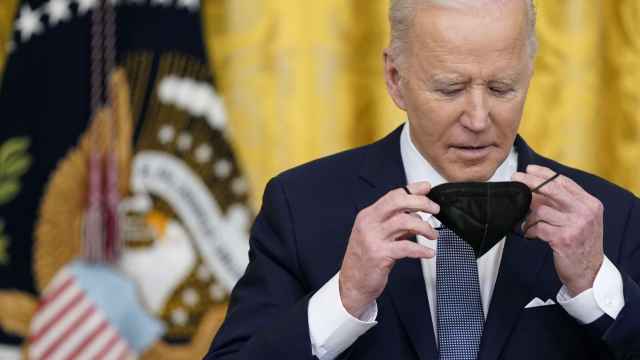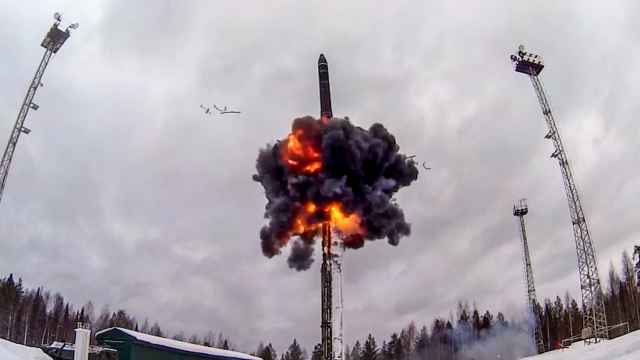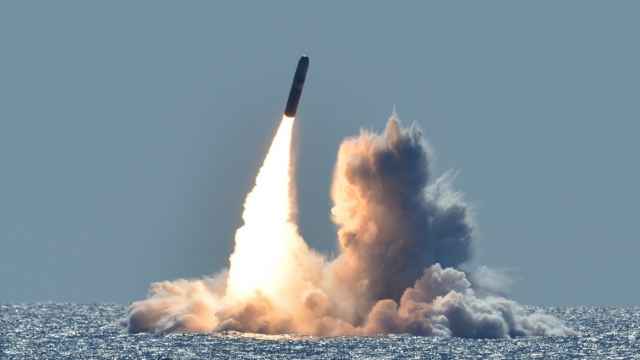The U.S. government charges that Russia has violated the Intermediate-range Nuclear Forces (INF) Treaty by testing and deploying a prohibited intermediate-range cruise missile. Russian officials deny the missile in question—the Russian designator 9M729—can fly that far.
There is a pathway that might resolve the impasse: the Russian military could exhibit the missile and explain its characteristics to make their point.
The INF Treaty, signed in 1987, banned all U.S. and Soviet ground-launched missiles of intermediate range — between 500 and 5,500 kilometers. It resulted in the destruction of some 2,700 missiles by summer 1991. When the Soviet Union collapsed, Russia took on the Soviet treaty obligations.
In 2014, the Obama administration said Russia had tested a prohibited ground-launched cruise missile. In early 2017, a senior U.S. military officer said that Russia had begun deploying the missile.
In December 2017, the Trump administration announced steps in response, including beginning research and development on a U.S. intermediate-range missile (the treaty does not ban R&D, as long as it does not involve flight-testing).
Russian officials heatedly deny the charge. The foreign ministry spokesperson claimed, “the 9M729 land-based cruise missile fully complies with the treaty’s requirements.” A senior arms control official in Moscow asserted that the missile’s range does not exceed 500 kilometers.
OK, show that.
Russian and U.S. officials could use the Special Verification Commission established by the INF Treaty to work out procedures for Russia to exhibit a 9M729 to U.S. technical experts.
The relevant question is how far the missile can fly. One key factor, for example, would be the size of the missile’s fuel tank(s). The experts could design ways to protect sensitive information unrelated to the missile’s range.
U.S. arms control agreements with the Soviet Union and Russia, such as the 1991 Strategic Arms Reduction Treaty (START I) and 2010 New START Treaty, have used exhibitions. For example, the New START provided that U.S. B-1 bombers would be exhibited to Russian experts to establish that they were conventional only and so should not be captured by New START’s limits on strategic delivery vehicles.
What's more, U.S. and Russian experts have a lot of experience conducting inspections.
Something akin to an exhibition resolved a major 1980s compliance question. U.S. and Soviet officials in 1974 concluded the Threshold Test Ban Treaty (TTBT). It limited each side’s underground nuclear tests to yields of no more than 150 kilotons, which is about ten times the size of the bomb that destroyed Hiroshima.
For years, however, the TTBT went unratified due to questions about whether it could be accurately verified. Moreover, the Reagan administration in 1984 said that the Soviets had “likely” violated the TTBT.
To break the impasse on bringing the TTBT into force, U.S. and Soviet negotiators in 1987 agreed on the Joint Verification Experiment: U.S. monitors would be on-site and take measurements during a nuclear test at the Soviet site in Semipalatinsk. Soviet monitors would do the same during a U.S. nuclear test in Nevada.
U.S. monitors employed a technique that involved placing a cable in the ground not far from the Soviet nuclear device. They then measured how quickly the cable was crushed when the device detonated.
With knowledge of the local geology, this technique could produce an accurate estimate of the yield of the Soviet device.
The exhibition tests at Semipalatinsk and in Nevada succeeded. Based on the results, U.S. and Soviet technical experts concluded additional verification measures, which allowed the United States to ratify the TTBT on December 8, 1990, by coincidence, the third anniversary of the signing of the INF Treaty.
The TTBT entered into force three days later.
An exhibition of the 9M729 missile offers a possible way out of the current compliance impasse. If the missile has a range of less than 500 kilometers, an exhibit could allow the Russians to show that and make their case.
Of course, if its range exceeds 500 kilometers, all 9M729s would have to be destroyed if Russia wished to return to full compliance with the INF Treaty.
Something similar to an exhibit could also help resolve the most serious Russian charge of U.S. non-compliance with the INF Treaty.
Russian officials say that the Aegis Ashore launchers for SM-3 missile interceptors in Romania, which will also become operational this year in Poland, can hold prohibited cruise missiles, given their similarity to launch systems on U.S. Navy warships that can carry a variety of missiles.
To address this concern, U.S. officials could offer to let Russian experts visit the interceptor sites and open some number of the launchers to show that they contain SM-3 missile interceptors, not prohibited cruise missiles.
If necessary, such exhibits might be conducted periodically.
The Russians say they are not violating the INF Treaty. Exhibits could offer a way for them to prove it. It is time for a bit of creative thinking on the Russian side (and on the American) if Moscow and Washington want to preserve the treaty.
Steven Pifer is a nonresident senior fellow at the Brookings Institution and a former U.S. Ambassador to Ukraine. The views and opinions expressed in opinion pieces do not necessarily reflect the position of The Moscow Times.
A Message from The Moscow Times:
Dear readers,
We are facing unprecedented challenges. Russia's Prosecutor General's Office has designated The Moscow Times as an "undesirable" organization, criminalizing our work and putting our staff at risk of prosecution. This follows our earlier unjust labeling as a "foreign agent."
These actions are direct attempts to silence independent journalism in Russia. The authorities claim our work "discredits the decisions of the Russian leadership." We see things differently: we strive to provide accurate, unbiased reporting on Russia.
We, the journalists of The Moscow Times, refuse to be silenced. But to continue our work, we need your help.
Your support, no matter how small, makes a world of difference. If you can, please support us monthly starting from just $2. It's quick to set up, and every contribution makes a significant impact.
By supporting The Moscow Times, you're defending open, independent journalism in the face of repression. Thank you for standing with us.
Remind me later.








